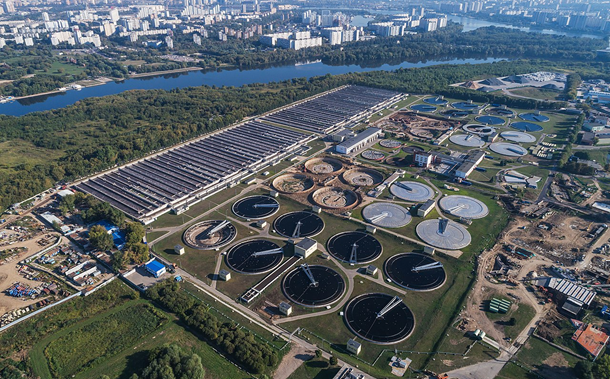Fracture Toughness of Fibrous Concrete Incorporated with Treated Recycled Aggregates
Downloads
This paper examines the effect of recycled concrete aggregate (RCA) on the behavior of concrete, particularly when combined with different fiber mesh and treatment techniques. Recycled concrete aggregate was treated using two treatment methods. Method 1 used a mix of cement, silica fume, and water, while Method 2 combined cement, silica fume, water, sand, and superplasticizer. Two types of fiber, glass and polypropylene (plastic) fiber mesh, were placed across the expected crack path to study their effect on crack resistance. A total of 24 prisms were cast and tested. Tests measured slump, absorption, unit weight, compressive strength, and fracture toughness. The findings indicate that using recycled concrete aggregate decreases strength and workability compared to normal aggregate. Treated recycled aggregate enhanced the strength, especially in Method 2, which provided compressive strength even higher than normal aggregate. However, fracture toughness decreased due to the sudden formation of cracks. Interestingly, concrete made with untreated recycled concrete aggregate and glass fiber exhibited better crack resistance and fracture toughness. This study compares RCA treated using two different methods and reinforced with two types of fiber mesh, showing that minor changes in the mix design can enhance the behavior of concrete made with RAC.
Downloads
[1] Ismail, S., & Ramli, M. (2014). Effects of adding fibre on strength and permeability of recycled aggregate concrete containing treated coarse RCA. International Journal of Civil, Architectural, Structural and Construction Engineering, 8(8), 890-896.
[2] Poon, C. S., Shui, Z. H., Lam, L., Fok, H., & Kou, S. C. (2004). Influence of moisture states of natural and recycled aggregates on the slump and compressive strength of concrete. Cement and Concrete Research, 34(1), 31–36. doi:10.1016/S0008-8846(03)00186-8.
[3] Padmini, A. K., Ramamurthy, K., & Mathews, M. S. (2009). Influence of parent concrete on the properties of recycled aggregate concrete. Construction and Building Materials, 23(2), 829–836. doi:10.1016/j.conbuildmat.2008.03.006.
[4] Ismail, S., & Ramli, M. (2013). Engineering properties of treated recycled concrete aggregate (RCA) for structural applications. Construction and Building Materials, 44, 464–476. doi:10.1016/j.conbuildmat.2013.03.014.
[5] Ariöz, Ö., Özsoy, A., & Yilmaz, G. (2004). Concrete with recycled aggregate. Key Engineering Materials, 264–268(III), 2145–2148. doi:10.4028/www.scientific.net/kem.264-268.2145.
[6] Liang, Y., Ye, Z., Vernerey, F., & Xi, Y. (2015). Development of Processing Methods to Improve Strength of Concrete with 100% Recycled Coarse Aggregate. Journal of Materials in Civil Engineering, 27(5), 4014163. doi:10.1061/(asce)mt.1943-5533.0000909.
[7] Ismail, S., & Ramli, M. (2016). Impact resistance of recycled aggregate concrete with single and hybrid fibers. MATEC Web of Conferences, 47. doi:10.1051/matecconf/20164702001.
[8] Srinivasa Reddy, V., Seshagiri Rao, M. V., & Shrihari, S. (2019). Appraisal of processing techniques for recycled aggregates in concrete. International Journal of Engineering and Advanced Technology, 8(6), 1661–1665. doi:10.35940/ijeat.F8407.088619.
[9] Garg, A., Jha, N. K., & Sharma*, D. P. K. (2020). Fracture Toughness of Concrete by using Recycle Aggregates in Addition with S2 Glass Fiber. International Journal of Recent Technology and Engineering, 9(1), 797–801. doi:10.35940/ijrte.f8187.059120.
[10] Altun, M. G., & Oltulu, M. (2020). Effect of different types of fiber utilization on mechanical properties of recycled aggregate concrete containing silica fume. Journal of Green Building, 15(1), 119–136. doi:10.3992/1943-4618.15.1.119.
[11] Chen, K., Zhu, Z., Xue, T., Zhang, H., Wang, A., He, R., Yang, H., & Wang, Y. (2021). Enhancement Treatment of Recycled Concrete Aggregate. Frontiers in Built Environment, 7, 739148. doi:10.3389/fbuil.2021.739148.
[12] Alqarni, A. S., Abbas, H., Al‐Shwikh, K. M., & Al‐Salloum, Y. A. (2022). Influence of Treatment Methods of Recycled Concrete Aggregate on Behavior of High Strength Concrete. Buildings, 12(4), 494. doi:10.3390/buildings12040494.
[13] Liao, J., Li, F., Gong, J., Zhao, L., Tong, X., & Li, X. (2024). Durability of Recycled Concrete after Reinforcing the Aggregates with Permeable Crystalline Materials. Advances in Civil Engineering, 2024, 9978563. doi:10.1155/2024/9978563.
[14] Liu, G., Tošić, N., & de la Fuente, A. (2023). Recycling of Macro-Synthetic Fiber-Reinforced Concrete and Properties of New Concretes with Recycled Aggregate and Recovered Fibers. Applied Sciences (Switzerland), 13(4), 2029. doi:10.3390/app13042029.
[15] Li, P., Gan, W., Yao, G., Huang, Q., & Zhao, R. (2023). Effect of permeable crystalline materials on the mechanical and porosity property of recycled aggregate and recycled aggregate concrete. Materials, 16(13), 4596. doi:10.3390/ma16134596.
[16] Dicha, H. M., Chaudhary, S., Husain, M. N., & Krishnaraj, R. (2025). Banana fibre-reinforced diatomaceous earth slurry treatment of recycled aggregate for enhanced structural concrete performance. Scientific Reports, 15(1), 4717. doi:10.1038/s41598-024-84762-w.
[17] Iraqi Standard Specifications I.Q.S. (2010). Portland Cement, No.5. Iraqi Standard, Baghdad, Iraq.
[18] Iraqi Standard Specifications (I.Q.S) No. 45. (1980). Natural Resources Aggregate Used in Concrete and Building. Iraqi Standard, Baghdad, Iraq.
[19] Wilburn, D. R., & Goonan, T. G. (1998). Aggregates from natural and recycled sources. US Geological Survey Circular, 1176, 36.
[20] Mahajan, B. (2025). Specific Gravity and Water Absorption Test of Coarse Aggregate. Civiconcepts, Karachi, India. Available online: https://civiconcepts.com/blog/specific-gravity-and-water-absorption-test-of-coarse-aggregate (accessed on August 2025).
[21] ASTM C143/C143M-12. (2015). Standard Test Method for Slump of Hydraulic-Cement Concrete. ASTM International, Pennsylvania, United States. doi:10.1520/C0143_C0143M-12.
[22] Silva, R. V., De Brito, J., & Dhir, R. K. (2014). Properties and composition of recycled aggregates from construction and demolition waste suitable for concrete production. Construction and Building Materials, 65, 201–217. doi:10.1016/j.conbuildmat.2014.04.117.
[23] Kou, S. C., & Poon, C. S. (2012). Enhancing the durability properties of concrete prepared with coarse recycled aggregate. Construction and Building Materials, 35, 69–76. doi:10.1016/j.conbuildmat.2012.02.032.
[24] Wang, J., Zhang, J., Cao, D., Dang, H., & Ding, B. (2020). Comparison of recycled aggregate treatment methods on the performance for recycled concrete. Construction and Building Materials, 234, 117366. doi:10.1016/j.conbuildmat.2019.117366.
[25] Zhao, J., Zhang, B., Xie, J., Wu, Y., Wang, Z., & Liu, P. (2022). Effects of nano-SiO2 modification on rubberised mortar and concrete with recycled coarse aggregates. Nanotechnology Reviews, 11(1), 473-496. doi:10.1515/ntrev -2022 -0024.
[26] ASTM C642-13. (2022). Standard Test Method for Density, Absorption, and Voids in Hardened Concrete. ASTM International, Pennsylvania, United States. doi:10.1520/C0642-13.
[27] Katz, A. (2003). Properties of concrete made with recycled aggregate from partially hydrated old concrete. Cement and Concrete Research, 33(5), 703–711. doi:10.1016/S0008-8846(02)01033-5.
[28] BS EN 12390-1:2000. (2000) Testing hardened concrete - Shape, dimensions and other requirements for specimens and moulds. British Standard Institute (BSI), London, United Kingdom.
[29] Mindess, S., Young, J.F. and Darwin, D. (2003) Concrete. Pearson Education, Upper Saddle River, United States.
[30] Bažant, Z. P., & Planas, J. (2019). Fracture and Size Effect in Concrete and Other Quasibrittle Materials. Routledge, New York, United States. doi:10.1201/9780203756799.
[31] Rilem, T. C. (1985). Determination of the fracture energy of mortar and concrete by means of three-point bend tests on notched beams. Materials and Structures, 18(4), 287–290. doi:10.1007/BF02472918.
[32] Xiao, J., Li, J., & Zhang, Ch. (2005). Mechanical properties of recycled aggregate concrete under uniaxial loading. Cement and Concrete Research, 35(6), 1187–1194. doi:10.1016/j.cemconres.2004.09.020.
[33] Lu, C., Yu, Q., Wei, J., Niu, Y., Zhang, Y., Lin, C., ... & Yang, P. (2024). Influence of interface transition zones (ITZ) and pore structure on the compressive strength of recycled aggregate concrete. Construction and Building Materials, 456, 139299. doi:10.1016/j.conbuildmat.2024.139299.
- Authors retain all copyrights. It is noticeable that authors will not be forced to sign any copyright transfer agreements.
- This work (including HTML and PDF Files) is licensed under a Creative Commons Attribution 4.0 International License.![]()














